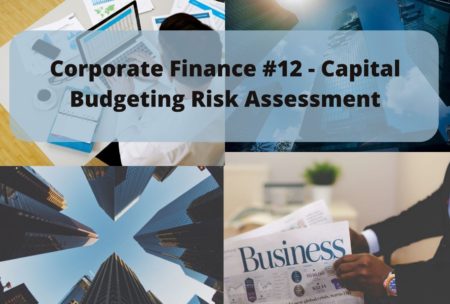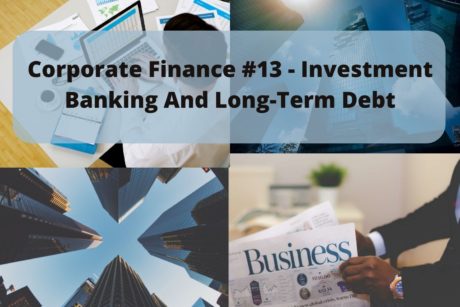Learn how to use risk management tools when making capital budgeting and investment decisions.
Read more.Instructor
Robert (Bob) Steele CPA, CGMA, M.S. Tax, CPI
Access all courses in our library for only $9/month with All Access Pass
Get Started with All Access PassBuy Only This CourseAbout This Course
Who this course is for:
- Business students
- Business professionals
What you’ll learn:
- Risk management tools that relate to capital budgeting and investment decisions
- The concept of population mean and expected value
- The term population variance and how it can apply to capital budgeting decisions
- Standard deviation and how it can apply to capital budgeting decisions
- The concept of coefficient of variation and how it can be used to measure risk in the capital budgeting decision making process
- Simulation models and how they can be useful in capital budgeting decisions
- How capital budgeting decisions should take into consideration the overall investment portfolio
Requirements:
- Basic understanding of corporate finance concepts
This course will cover the use of risk assessment tools as they relate to capital budgeting and investment decisions and how to use them.
We will include many example problems, both in the format of presentations and Excel worksheet problems. The Excel worksheet presentations will include a downloadable Excel workbook with at least two tabs, one with the answer, the second with a preformatted worksheet that can be completed in a step-by-step process along with the instructional videos.
When making long term investment and capital budgeting decisions, we need to consider the time value of money. The decision-making process will estimate future cash flows and then apply our time value of money concepts to those future cash flows.
This course will take a step back in the process, providing tools to best estimate the future cash flows. To make the best decision, we will need to estimate what the future cash flows will be and the likelihood of those cash flows, giving us numbers we can apply present value concepts to while also taking into consideration risk.
To help measure risk, the course will use statistical tools including the population mean, population variance, standard deviation, and coefficient of variation.
We will provide a quick overview of these statistical concepts in general and then consider how we can apply them to measuring risk for investment and capital budgeting decisions.
Our Promise to You
By the end of this course, you will have learned risk management tools for capital budgeting.
10 Day Money Back Guarantee. If you are unsatisfied for any reason, simply contact us and we’ll give you a full refund. No questions asked.
Get started today and learn more about corporate finance.
Course Curriculum
| Section 1 - Introduction | |||
| Capital Budget Risk Overview | 00:00:00 | ||
| Measure Of Risk | 00:00:00 | ||
| Risk And Discount Rates | 00:00:00 | ||
| Simulation Models | 00:00:00 | ||
| Investment Impact On Portfolio | 00:00:00 | ||
| Section 2 - Practice Problems | |||
| Standard Deviation, Variance, And Coefficient Of Variation | 00:00:00 | ||
| Standard Deviation, Variance, And Coefficient Of Variation | 00:00:00 | ||
| Expected Value, Standard Deviation, And Coefficient Of Variation Problem 2 | 00:00:00 | ||
| Expected Value, Standard Deviation, And Coefficient Of Variation Problem 3 | 00:00:00 | ||
| Coefficient Of Variation Three Investment Alternatives | 00:00:00 | ||
| Coefficient Of Variation And Investment Risk | 00:00:00 | ||
| Coefficient Of Variation Two Project Alternatives | 00:00:00 | ||
| Expected Value And Net Present Value Even Yearly Cash Flows | 00:00:00 | ||
| Expected Value And Coefficient Of Variation Investment Options | 00:00:00 | ||
| Expected Value In Capital Budgeting Decision Uneven Payments | 00:00:00 | ||
| Expected Value For Multiple Years And NPV | 00:00:00 | ||
| Section 3 - Excel Problems | |||
| Downloadable Resources | 00:00:00 | ||
| Standard Deviation, Variance, And Coefficient Of Variation | 00:00:00 | ||
| Expected Value, Standard Deviation, And Coefficient Of Variation Problem 1 | 00:00:00 | ||
| Expected Value, Standard Deviation, And Coefficient Of Variation Problem 2 | 00:00:00 | ||
| Expected Value, Standard Deviation, And Coefficient Of Variation Problem 3 | 00:00:00 | ||
| Coefficient Of Variation Three Investment Alternatives | 00:00:00 | ||
| Coefficient Of Variation And Investment Risk | 00:00:00 | ||
| Expected Value And Net Present Value Even Yearly Cash Flows | 00:00:00 | ||
| Expected Value And Coefficient Of Variation Investment Options | 00:00:00 | ||
| Expected Value In Capital Budgeting Decision Uneven Payments | 00:00:00 | ||
| Expected Value For Multiple Years And NPV | 00:00:00 | ||




